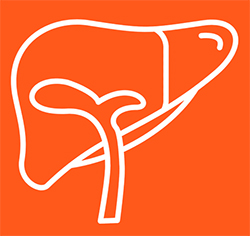Journey Through The GI Tract PART 7: The Gallbladder

In this lesson of ‘My GI Tract’ series, you will learn how the gallbladder and the accessory digestive organs work together to break down the foods that we consume.
Here’s a quick recap. The digestive process begins in the mouth. It receives the food and breaks it up into small, easy-to-swallow pieces. Enzymes from the saliva break down any starch and the food passes into a long tube called the oesophagus. It carries the food bolus along its length, and contracts (peristalsis) to move food down towards the stomach. The enzymes and acids in the stomach continue the process of breaking down food, before they are released into the small intestine. The small intestine receives food from the stomach and continues to break down the food while absorbing the majority of its nutrients. In the upper section of your small intestine (duodenum), digestion continues as chyme from the stomach mixes with a variety of digestive juices from your pancreas, liver and gallbladder.
Your Gallbladder
- Main function is to store bile produced by the liver and then releases as necessary.
- A sac-like organ, located in the upper right part of your abdomen and sits just under your liver.
- Roughly 3 to 4 inches long, and 1 inch across.
If your liver is Batman, then your gallbladder is its Robin
Think of your liver as a factory and your gallbladder as a warehouse next door. Your liver makes a digestive juice called bile. The bile then passes to the gallbladder, which concentrates and stores it for later use.
What is bile?
Bile aids in digesting fats and is needed to absorb fat-soluble vitamins A, D, E, and K. It is a mixture of mainly cholesterol, bilirubin and bile salts. Fats are the most challenging part of food to digest, so you can see how bile has a very important role.
When you digest fatty food, your gallbladder releases bile. This digestive juice passes down a narrow tube (the cystic duct). It goes straight into the first section of your small intestine (the duodenum). There, the strong chemicals go to work by breaking down the fat into a liquid form that you can easily digest.
Did you know? The biliary system is a pipe-like system that carries bile from your liver to your small intestine.
Liver, Gallbladder & Pancreas: Teamwork Trio
Before you begin eating, bile (initially made by your liver) is already stored in the gallbladder. While it’s in storage the bile is concentrated by the removal of water. Then, when you digest fatty food and that fat reaches your duodenum, a hormonal stimulus tells the gallbladder to contract, pushing the stored bile into your digestive tract. The bile travels down your cystic duct into the common bile duct (CBD). The CBD passes through the pancreas (via the pancreatic duct) before it empties into the duodenum. Enzymes from your pancreas (carried via the pancreatic duct) together with the digestive juices from the liver (carried via the hepatic duct) and other enzymes, work together to break down fatty bits into a liquid form that you can digest. This facilitates an easy absorption through the walls of your small intestine and into your blood in the form of energy.
Tune in next time, as we explore part 8 of the ‘My GI Tract’ series to learn just how important our colon is for our digestion.
To find out about how to keep your digestive system working effectively, and to book your appointment, get in touch.
Email us info@claritywellbeing.co.uk or call us on 07782 200 112.
